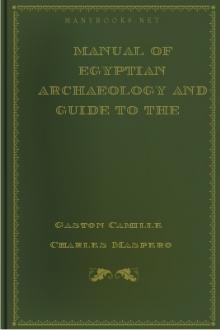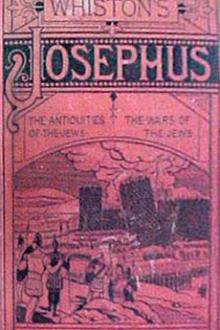Manual of Egyptian Archaeology and Guide to the Study of Antiquities in Egypt by Gaston Maspero (i have read the book txt) 📕

107. Wall-scene from temple of Denderah
108. Obelisk of Heliopolis, Twelfth Dynasty
109. Obelisk of Begig, Twelfth Dynasty
110. "Table of offerings" from Karnak
111. Limestone altar from Menshîyeh
112. Wooden naos, in Turin Museum
113. A mastaba
114. False door in mastaba
115. Plan of forecourt, mastaba of Kaäpir
116. Plan of forecourt, mastaba of Neferhotep
117. Door in mastaba façade
118. Portico and door of mastaba
119. Plan of chapel, mastaba of Khabiûsokari
120. Plan of chapel, mastaba of Ti
121. Plan of chapel, mastaba of Shepsesptah
122. Plan of chapel, mastaba of Affi
123. Plan of chapel, mastaba of Thenti
124. Plan of chapel, mastaba of Red Scribe
125. Plan of chapel, mastaba of Ptahhotep
126. Stela in mastaba of Merrûka
127. Wall-scene from mastaba of Ptahhotep
128. Wall-scene from mastaba of Ûrkhûû
129. Wall-scene from mastaba of Ptahhotep
130. Plan of serdab in mastaba at Gizeh
131. Plan of serdab and
Read free book «Manual of Egyptian Archaeology and Guide to the Study of Antiquities in Egypt by Gaston Maspero (i have read the book txt) 📕» - read online or download for free at americanlibrarybooks.com
- Author: Gaston Maspero
- Performer: -
Read book online «Manual of Egyptian Archaeology and Guide to the Study of Antiquities in Egypt by Gaston Maspero (i have read the book txt) 📕». Author - Gaston Maspero
The gods dwelt in fortified mansions, or at any rate in redoubts to which the people of the place might fly for safety in the event of any sudden attack upon their town. Fig. 4.--Plan of house, Medinet Habû Fig. 4.--Plan of house, Medinet Habû
Such towns as were built all at once by prince or king were fairly regular in plan, having wide paved streets at right angles to each other, and the buildings in line. The older cities, whose growth had been determined by the chances and changes of centuries, were characterised by no such regularity. Their houses stood in a maze of blind alleys, and narrow, dark, and straggling streets, with here and there the branch of a canal, almost dried up during the greater part of the year, and a muddy pond where the cattle drank and women came for water. Somewhere in each town was an open space shaded by sycamores or acacias, and hither on market days came the peas-ants of the district two or three times in the month. There were also waste places where rubbish and refuse was thrown, to be quarrelled over by vultures, hawks, and dogs.
The lower classes lived in mere huts which, though built of bricks, were no better than those of the present fellahin. Fig 5.--Plan of house, Medinet Habû. Fig 5.--Plan of house, Medinet Habû.
At Karnak, in the Pharaonic town; at Kom Ombo, in the Roman town; and at Medinet Habû, in the Coptic town, the houses in the poorer quarters have seldom more than twelve or sixteen feet of frontage. They consist of a ground floor, with sometimes one or two living-rooms above. The middle- class folk, as shopkeepers, sub-officials, and foremen, were better housed. Their houses were brick-built and rather small, yet contained some half- dozen rooms communicating by means of doorways, which were usually arched over, and having vaulted roofs in some cases, and in others flat ones. Fig. 6.--Façade of a house toward the street, second Theban period. Fig. 6.--Façade of a house toward the street, second Theban period.
Some few of the houses were two or three storeys high, and many were separated from the street by a narrow court, beyond which the rooms were ranged on either side of a long passage (fig. 4). More frequently, the court was surrounded on three sides by chambers (fig. 5); and yet oftener the house fronted close upon the street. In the latter case the façade consisted of a high wall, whitewashed or painted, and surmounted by a cornice. Fig 7.--Plan of central court of house, second Theban period. Fig 7.--Plan of central court of house, second Theban period.
Even in better houses the only ornamentation of their outer walls consisted in angular grooving, the grooves being surmounted by representations of two lotus flowers, each pair with the upper parts of the stalks in contact (see figs. 24, 25). The door was the only opening, save perhaps a few small windows pierced at irregular intervals (fig. 6). Even in unpretentious houses, the door was often made of stone. The doorposts projected slightly beyond the surface of the wall, and the lintel supported a painted or sculptured cornice. Having crossed the threshold, one passed successively through two dimly-lighted entrance chambers, the second of which opened into the central court (fig. 7). The best rooms in the houses of wealthier citizens were sometimes lighted through a square opening in the centre of a ceiling supported on wooden columns. In the Twelfth Dynasty town of Kahûn the shafts of these columns rested upon round stone bases; they were octagonal, and about ten inches in diameter (fig. 8).
Notwithstanding the prevalence of enteric disease and ophthalmia, the family crowded together into one or two rooms during the winter, and slept out on the roof under the shelter of mosquito nets in summer. On the roof also the women gossiped and cooked. The ground floor included both store- rooms, barns, and stables. Private granaries were generally in pairs (see fig. 11), brick-built in the same long conical shape as the state granaries, and carefully plastered with mud inside and out. Neither did the people of a house forget to find or to make hiding places in the walls or floors of their home, where they could secrete their household treasures--such as nuggets of gold and silver, precious stones, and jewellery for men and women--from thieves and tax-collectors alike. Wherever the upper floors still remain standing, they reproduce the ground-floor plan with scarcely any differences. These upper rooms were reached by an outside staircase, steep and narrow, and divided at short intervals by small square landings. Fig 9.--Box representing a house (British Museum). Fig 9.--Box representing a house (British Museum).
The rooms were oblong, and were lighted only from the doorway; when it was decided to open windows on the street, they were mere air-holes near the ceiling, pierced without regularity or symmetry, fitted with a lattice of wooden cross bars, and secured by wooden shutters. The floors were bricked or paved, or consisted still more frequently of merely a layer of rammed earth. The rooms were not left undecorated; the mud-plaster of the walls, generally in its native grey, although whitewashed in some cases, was painted with red or yellow, and ornamented with drawings of interior and exterior views of a house, and of household vessels and eatables (fig. 10).
The roof was flat, and made probably, as at the present day, of closely laid rows of palm-branches covered with a coating of mud thick enough to withstand the effects of rain. Fig 11.--View of mansion from the tomb of Anna, Eighteenth Dynasty. Fig 11.--View of mansion from the tomb of Anna, Eighteenth Dynasty.
Sometimes it was surmounted by only one or two of the usual Egyptian ventilators; but generally there was a small washhouse on the roof (fig. 9), and a little chamber for the slaves or guards to sleep in. The household fire was made in a hollow of the earthen floor, usually to one side of the room, and the smoke escaped through a hole in the ceiling; branches of trees, charcoal, and dried cakes of ass or cow dung were used for fuel.
The mansions of the rich and great covered a large space of ground. They most frequently stood in the midst of a garden, or of an enclosed court planted with trees; and, like the commoner houses, they turned a blank front to the street, consisting of bare walls, battlemented like those of a fortress (fig. 11). Thus, home-life was strictly secluded, and the pleasure of seeing was sacrificed for the advantages of not being seen. The door was approached by a flight of two or three steps, or by a porch supported on columns (fig. 12) and adorned with statues (fig. 13), which gave it a monumental appearance, and indicated the social importance of the family.
Fig. 12.--Porch of mansion, second Theban period,
Fig. 13.--Porch of mansion, second Theban period.
Sometimes this was preceded by a pylon-gateway, such as usually heralded the approach to a temple. Inside the enclosure it was like a small town, divided into quarters by irregular walls. The dwelling-house stood at the farther end; the granaries, stabling, and open spaces being distributed in different parts of the grounds, according to some system to which we as yet possess no clue. These arrangements, however, were infinitely varied. If I would convey some idea of the residence of an Egyptian noble,--a residence half palace, half villa,--I cannot do better than reproduce two out of the many pictorial plans which have come down to us among the tomb-paintings of the Eighteenth Dynasty. The first (figs. 14, 15) represent a Theban house. The enclosure is square, and surrounded by an embattled wall. The main gate opens upon a road bordered with trees, which runs beside a canal, or perhaps an arm of the Nile. Low stone walls divide the garden into symmetrical compartments, like those which are seen to this day in the great gardens of Ekhmîm or Girgeh.
In the centre is a large trellis supported on four rows of slender pillars. Four small ponds, two to the right and two to the left, are stocked with ducks and geese. Two nurseries, two summer-houses, and various avenues of sycamores, date-palms, and dôm-palms fill up the intermediate space; while at the end, facing the entrance, stands a small three-storied house surmounted by a painted cornice.
The second plan is copied from one of the rock-cut tombs of Tell el Amarna (figs. 16, 17). Here we see a house situate at the end of the gardens of the great lord Aï, son-in-law of the Pharaoh Khûenaten, and himself afterwards king of Egypt. An oblong stone tank with sloping sides, and two descending flights of steps, faces the entrance. The building is rectangular, the width being somewhat greater than the depth. A large doorway opens in the middle of the front, and gives access to a court planted with trees and flanked by store-houses fully stocked with provisions. Fig 16.--Part of the palace of Aï, from tomb-painting, Eighteenth Dynasty, El Amarna. Fig 16.--Part of the palace of Aï, from tomb-painting, Eighteenth Dynasty, El Amarna.
Two small courts, placed symmetrically in the two farthest corners, contain the staircases which lead up to the roof terrace. This first building, however,





Comments (0)